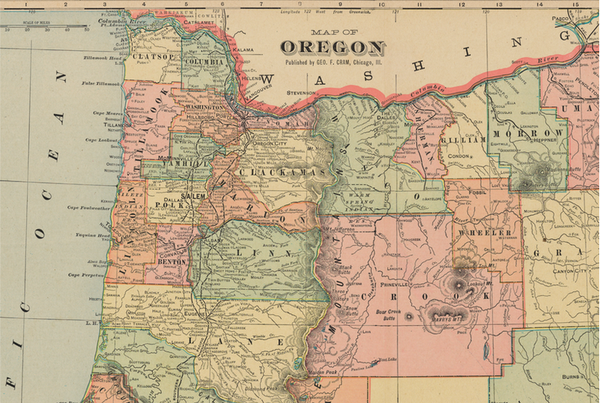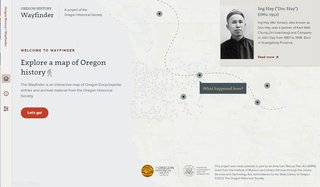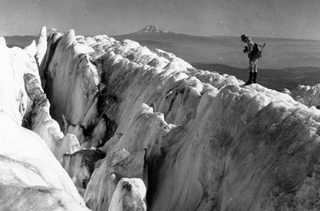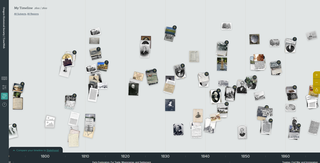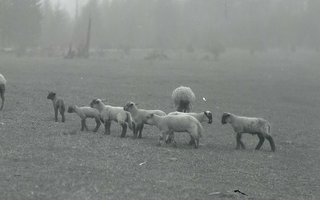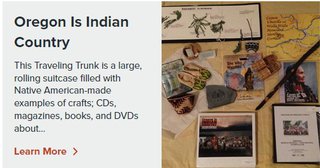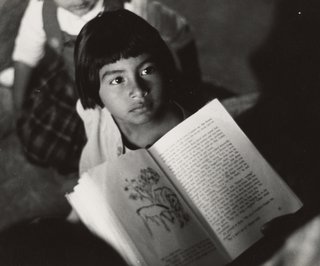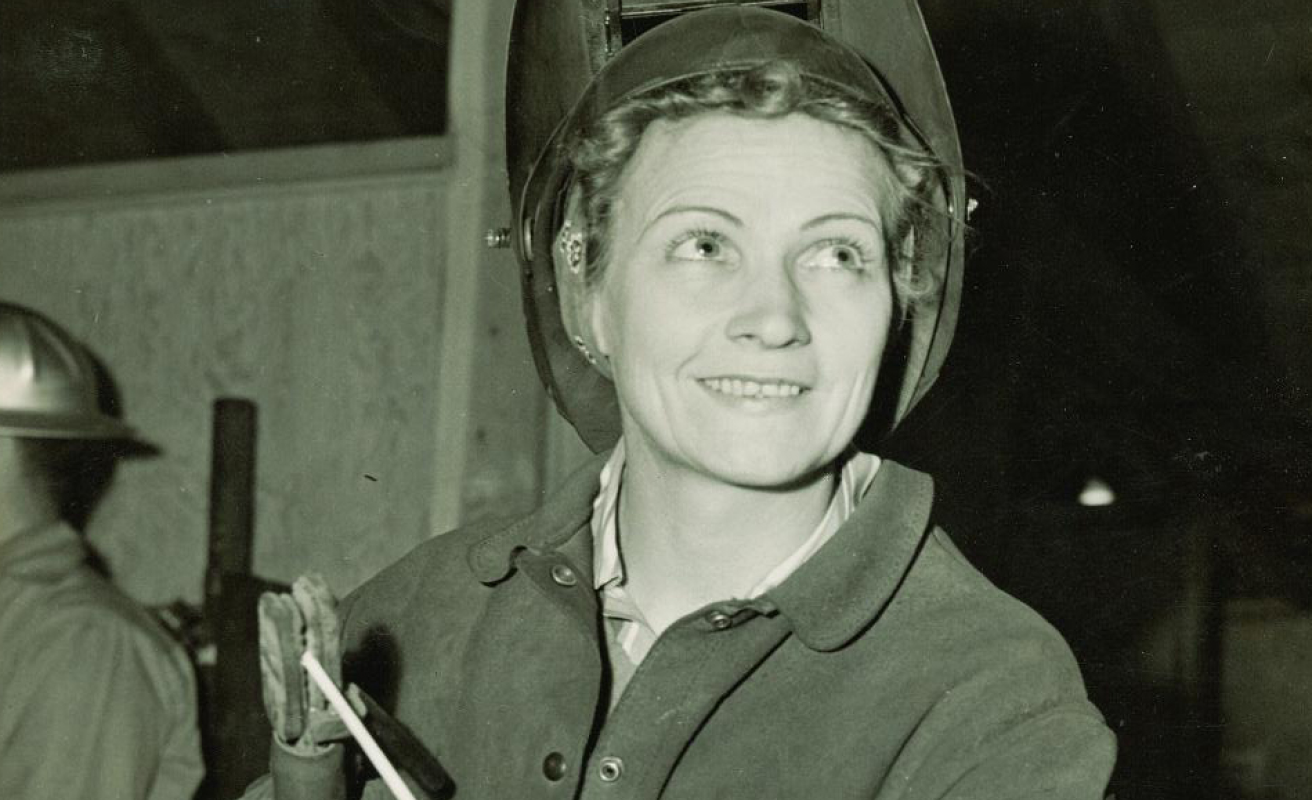Teaching with Primary Sources
Primary sources are the fundamental materials that furnish the data and information historians use to understand the past. The OHP refers to primary sources as "historical records." Learning how to recognize and interpret primary sources, such as maps, letters, and newspapers, allows students at all levels to access multiple perspectives and to compose informed interpretations of historical events. The following approaches to teaching primary sources in the classroom reflect the Oregon Department of Education’s Social Studies Standards.
Approach for Maps
Maps are graphic representations of boundaries and transportation routes, as well as of geographical, political, and cultural features. A political map, for example, might depict Indian reservations, as determined by treaties; a cultural map might focus on heritage or tourist sites. Teachers effectively use maps to illustrate concepts that may be difficult for students to understand, such as settlement patterns, trade routes, and economic growth and development. Analyzing maps can help students see patterns in land use, the effects of cultural movements, the results of political conflicts and war, and other kinds of change over time.
- Compare maps from different periods of time to look for differences in towns and cities, roads and railroads, and land use.
- Examine local maps for the names of streets, neighborhoods, and landmarks. Where did the names come from? What is important in local, regional, state, national, and global cultures? Do place-names represent Native people, primarily men or women, explorers, prominent citizens, or geographical features?
- Examine current maps with major highways and shipping routes and compare them to historical trade route maps. How do old routes and new routes overlap, and what impact did the routes have on settlements and infrastructure?
- Look at maps that depict population and economic centers and determine how they may have contributed to the development of towns and cities. How important are natural resources–such as waterways, timber, gold, and fish–to sustaining towns?
Approach for Photographs
Photographs provide a lot of information about the past, including the way people dressed, the technology they used, the work they did, and the people they spent time with. Photographs fix people, places, and events in time and are valuable primary sources for researchers. They can draw students into a time and place and encourage them to ask questions.
- Look at photographs that depict workers in various industries in Oregon during a specific time period. What kind of work are they doing? What technology is depicted? What can you tell about the people, such as their race, gender, and ethnicity?
- Look at photos of city street scenes. What businesses were there? What kinds of businesses and services were prosperous or struggling? Which no longer exist?
Approach for Manuscripts
Manuscripts refer to unpublished historical materials written by hand (including typed), such as letters, journals, telegrams, ledgers, and other documents that often provide evidence of daily life. These primary sources tell students how people were feeling, how they viewed the world and their place in it, how they managed their businesses, and how they dealt with personal challenges and events, such as wars and economic recessions.
- When using a manuscript, students should begin by identifying where the manuscript was produced, who wrote it, to whom it was addressed, and the date it was created. What significant events were happening at the time?
- Provide students with a copy of a historical letter. Who is the author? To whom is the letter addressed? What is the purpose/message of the letter? What points of view does the author express?
Approach for Newspapers
Newspapers are periodical records of events, trends, crises, and celebrations. They are printed and distributed, usually daily or weekly, and contain news, opinion articles, features, and advertising. Newspapers help us determine when, who, and where things happened, but the articles are not always accurate about why things happened.
- When using a newspaper or news article, students should begin by noting the newspaper name, its place and date of publication, the article title, and the author, if possible. During the nineteenth century, often a single newspaper editor would write most of the local articles and reprint stories from other newspapers to fill in for national and international news. How does knowing that help students understand the role of editors in the political and cultural life of Oregon towns?
- Newspaper writers in Oregon created what is referred to as the “Oregon Style” of journalism, which included printing personal attacks on rival editors. What does that tell students about the role newspapers played in the politics of early Oregon?
- Have students examine advertising in a specific time period of a newspaper. Examine what was sold, what the prices were, and how those goods and services compare to those sold today.
Approach for Artifacts
Artifacts, such as clothing, furniture, cooking supplies, tools, or works of art, are the characteristic products of human activity at a particular time and place. Artifacts, or photos of artifacts, may provide evidence of the technology of the time and people’s activities, creativity, world views, and values.
- When examining an artifact, describe its features, attempt to identify where it came from, the time period in which it was created, and how it might have been used.
- Have students examine artifacts that would have been used daily during a specific time period. Ask students to consider what the item tells them about life during this time. Would this have been a common or an unusual item?
Approach for Ephemera
Ephemera are printed objects that are intended for one-time use, and they include material such as ticket stubs, brochures, playbills, flyers, and posters. Ephemera are a record of how people accessed, described, and interpreted an event.
- Have students identify and analyze examples of ephemera for current events or issues. What do the items represent? What will the item communicate to people in the future? Is this an item that people would save?
- Have students research the history of a local annual event–for example, the Rose Festival, the Pendleton Round-Up, or the Woodburn Parade. What was the ephemera used for–to advertise, provide information, as a keepsake? What values and ideas are expressed in the materials–creativity, community, patriotism, protest?
Approach for Oral Histories
An oral history is a recorded conversation between a historian and a person who was part of or witness to significant events (such as wars, inventions, political movements, and natural disasters.) In order for students to understand how oral histories are created, teachers should discuss their purpose and methodology. Consider the question order, the types of questions that elicit the most information, and how the interviewer handles difficult subjects.
- Have students research a historical event or person and listen to or read related oral histories. How does our perception of an event change after listening to a first-person account?
- Have the class read oral histories that describe historical events. Students should compare the oral history to published accounts of the event, both those created at the time and those published later.
History Project Exhibits
Collections of historical records explore themes and connections.
